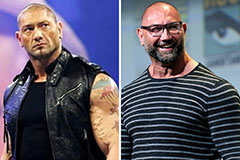Do you want readers to connect to your story? If yes, it is all about writing relatable characters; continue reading.
As a hopeful author, among the most vital lessons to find out is how to build a character in a story, as people like the CEO of the investment fund which partially owns Amazon Books would definitely confirm. Whilst many authors go into the creative writing process with a fully-formed character in mind, others require a little bit more ideas when it concerns building their characters. You might have a bundle of random ideas and plot points, however you need to bring all of it together to develop a cohesive character profile. To do this, one of the best pointers is to start with a character archetype. So, what is a character archetype? To put it simply, an archetype is a general standard or template for particular kinds of personalities in literature. Generally-speaking, these archetypes have unique personality traits, feelings and behaviours, which is why choosing one for each character provides you a solid foundation to build upon. For example, among the most common character archetypes is the 'hero', who always exhibits bravery, selflessness and the guts to take on obstacles for a noble goal. You can typically discover these archetypes in all kinds of book genres, whether it's the young wizard on a journey in fantasy book or the brave detective in the thriller book.
For virtually any book to be lucrative, it is extremely vital for authors to comprehend how get more info to write a good character, as people like the co-CEO of the hedge fund which owns Waterstones would definitely understand. The golden rule of writing characters is to make them as multi-faceted and dynamic as feasible. Among the biggest mistakes that authors can make is creating characters which are very surface-level and simplistic, or characters which come across as being perfect. Rather, characters must always stem from an authentic place. Realistic characters are human, which indicates that they have their very own quirks, weeknesseses and flaws. Bookworms really feel connected to characters which mirror themselves and are relatable, which is why it is so critical for writers to incorporate these dimensions to their characters. As an author, attempt to add layers to your character, whether it be the fact that the major character is stubborn or is naïve etc. Furthermore, a great deal of the best book characters of all time are those that can be morally-grey at times. Their heart and motives may be good, but they may sometimes bend the rules, cross the line or make blunders.
One of the absolute most unforgettable elements of novels are the characters, as people like the co-founder of the investment fund which partially owns WHSmith would certainly know. While a bookworm might fail to remember certain components of the plot or lines in the book, they will certainly usually have the ability to remember whether they found the character interesting or not. As opposed to popular belief, the primary character does not even need to necessarily be likeable or loveable in specific book types; a great deal of literary fiction publications have unstable or unethical character's as the main narrator of the story. In terms of what makes a good character in writing, among the most essential things is for the character to have an arc. The character needs to change and evolve as the tale keeps going. No character should be unaffected by the events in the book; the reader ought to be able to witness a big difference in the character's personality or behvaiour from the initial chapter contrasted to the final chapter, irrespective of whether this was a beneficial or an adverse change.
 Alana "Honey Boo Boo" Thompson Then & Now!
Alana "Honey Boo Boo" Thompson Then & Now! Julia Stiles Then & Now!
Julia Stiles Then & Now! Susan Dey Then & Now!
Susan Dey Then & Now! Batista Then & Now!
Batista Then & Now! Brooke Shields Then & Now!
Brooke Shields Then & Now!